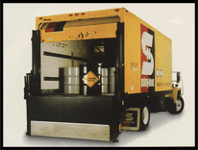
Throughout 2017 OSHA officials most frequently cited auto body shops for respiratory protection and hazard communication noncompliance. As a result, nearly half of the $364,270 in penalties slapped on shops last year. These fines levied for violations found in 80 inspections, thus costing each shop more than $4,500 a pop.
OSHA records indicate the agency conducted or attempted 302 inspections in the industry between Oct. 1, 2016, and Sept. 30, 2017. Thus, resulting in 80 inspections yielding citations. Hence, if selected for an inspection you have a 1 in 4 chance of receiving a violation.
Compliance assistance specialist John Olaechea, whose regional six-state OSHA office is in the midst of a special investigative emphasis on automotive business. Some of the ways repairers might be tripped up by their workforce — or worse, employees injured by it.
Olaechea said hazard communication and respiratory protection constantly fluctuate as the two main issues for shops.
*article credits to RepairerDrivenNews.com
EPA on hazardous waste and auto body shop responsibility

Late last year, Repairer Driven News conducted an email interview with the EPA on a collision repairer’s responsibility regarding hazardous waste. Meanwhile, shops continue to carry the risk of responsibility of the material even after the material has been removed from the shop and turned over to the contractor. Here’s an excerpt from the conversation with an EPA spokeswoman, with minor formatting edits.
Q: Can you give me a general overview of the EPA’s cradle-to-grave rules and what it means for hazardous waste producers like body shops?
A: The Resource Conservation and Recovery Act (RCRA) Subtitle C establishes a federal program to manage hazardous wastes from cradle to grave. The objective of the Subtitle C program is to ensure that hazardous waste is handled in a manner that protects human health and the environment. In order to achieve this, there are Subtitle C regulations for the generation, transportation, and treatment, storage, or disposal of hazardous wastes. As a result, States have become authorized to implement these regulations in lieu of the federal EPA. Therefore individual states have become largely responsible for running these programs.
*article credits to RepairerDrivenNews.com
The Most Frequently Cited Violations Of Respiratory Protection, Hazard Communication

As a result of violations, OSHA’s respiratory
Below are the five most frequently cited OSHA standards for collision repair facilities during that time period, along with the number of citations and fines issued for those violations.
- Respiratory protection (1910.134) – 166 citations, $103,830 in fines
- Hazard communication (1910.1200) – 79 citations, $54,046 in fines
- Spray finishing using flammable and combustible materials (1910.107) – 24 citations, $48,806 in fines
- Powered industrial trucks (1910.178) – 10 citations, $17,427 in fines
- Flammable and combustible liquids (1910.106) – 10 citations, $12,011 in fines
Collision repairers can view the full list on OSHA’s website, which enables visitors to search frequently cited OSHA standards by NAICS (North American Industrial Classification System) codes as well as, the NAICS code for Automotive Body, Paint and Interior Repair and Maintenance is 81121.
*article credits to BodyShopBusiness.com

